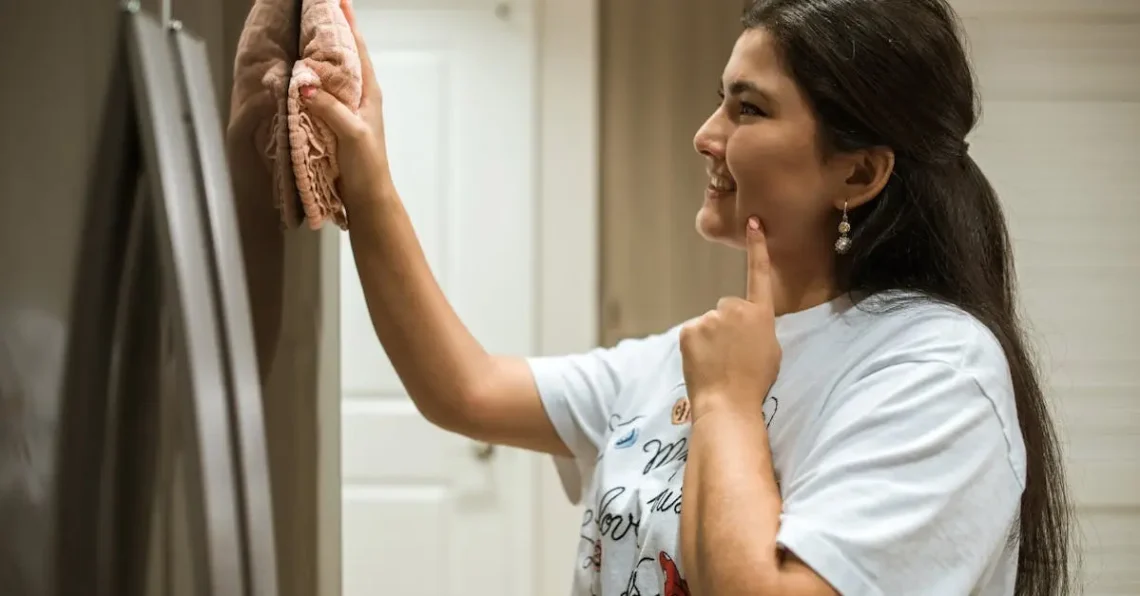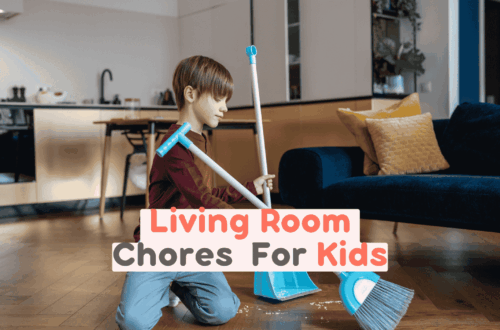It’s 6:15 p.m. The kitchen looks like a tornado passed through, the kids are supposed to set the table, and you’re repeating the same line you’ve said all day: “Please pick up your plate.” Sound familiar? If you’re exhausted by nagging and short on time, positive reinforcement for kids’ chores can turn that daily struggle into progress, and teach real responsibility.
If you want a fast start, grab our free printable chore charts by age to match chores with your child’s abilities and get out of the nagging loop: Free Printable Chore Charts by Age.
Why Positive Reinforcement Strategies for Chores Matter
Positive reinforcement is more than sticker charts and candy bribes — it’s about shaping long-term habits, motivation, and a child’s sense of competence. Research on motivation shows that when feedback supports a child’s autonomy and highlights effort (process praise), children are more likely to engage willingly and persistently in tasks. For a deeper look at how rewards and praise affect intrinsic motivation, see Deci, Koestner & Ryan’s meta-analysis: Effects of Extrinsic Rewards on Intrinsic Motivation. The Harvard Center on the Developing Child also summarizes how predictable, positive feedback supports healthy behavior and executive function development: Center on the Developing Child.
Core Positive Reinforcement for Kids Chores (Quick Reference)
Below is a scannable list of practical, evidence-informed strategies you can start using today. Each tip includes a simple example you can try during dinner, morning routines, or cleanup time.
1. Be specific with praise — praise the process, not the person
- What to say: “You folded those towels so neatly — great job concentrating!”
- Why: Process praise (effort/strategy) builds resilience and encourages kids to repeat helpful behaviors.
2. Reinforce immediately and consistently
- What to do: Give a thumbs-up or a quick comment right after the chore is completed.
- Why: Immediate reinforcement connects the behavior and the reward in your child’s mind, making the action more likely to repeat.
3. Use small, frequent rewards rather than rare big prizes
- What to do: A sticker, extra 10 minutes of reading, or picking dessert for the night.
- Why: Small rewards keep momentum and avoid turning chores into a distant transactional bargain.
4. Make reinforcement meaningful and linked to chores
- What to do: If your child empties the dishwasher, let them choose the music during dinner or pick a game for family night.
- Why: Rewards tied to family life build intrinsic value and show chores earn real privileges.
5. Use visual cues: chore charts & progress trackers
- What to use: A weekly chart with stickers, checkboxes or a points system your child can see.
- Why: Visual progress reinforces consistency and lets kids feel ownership over their tasks. Download age-appropriate templates here: Free Printable Chore Charts by Age.
6. Pair reinforcement with choices to support autonomy
- What to do: Offer two acceptable options: “Do you want to sweep or wipe the table?”
- Why: Choices increase cooperation and make kids feel in control, improving buy-in.
7. Celebrate small wins and milestones
- What to do: When a child reliably makes their bed for a week, celebrate with a special sticker, a note, or a family high-five ritual.
- Why: Milestone celebrations make progress visible and rewarding without making chores solely reward-driven.
8. Use natural consequences alongside encouragement
- What to do: If a child forgets to pack their lunch, they might need to adapt their schedule the next day (with your guidance).
- Why: Natural consequences teach responsibility while reinforcement builds the habit to avoid those consequences.
9. Fade external rewards over time
- What to do: Gradually replace stickers or points with praise and increased responsibility as habits form.
- Why: The goal is lasting responsibility and kids’ independence — fading rewards helps intrinsic motivation take over.
10. Model the behavior (kids copy what they see)
- What to do: Do chores together, narrate your own process: “I’m sorting socks — I’ll put the whites together first.”
- Why: Children learn routines by watching you; modeling sets expectations and provides a live script to imitate.
Want printable charts to match these strategies with age-appropriate tasks? Download them here: Free Printable Chore Charts by Age.
Tips & Common Mistakes When Using Positive Reinforcement for Kids Chores
- Don’t over-rely on material rewards: As Deci and colleagues found, controlling extrinsic rewards can sometimes weaken intrinsic motivation. Use prizes strategically, not as the only motivator.
- Avoid vague praise: “Good job” is nice, but specific feedback (what, how, and why) helps the child understand what to repeat.
- Don’t rescue immediately: If a child does a chore imperfectly, guide them with one clear tip and encourage another try instead of taking over.
- Keep expectations age-appropriate: Use a chores-by-age guide so tasks match ability — younger kids need simpler, clearly defined steps.
Tracking Kids Chores — How Positive Reinforcement Tools Help
Consistency is easier with the right tools. Visual trackers and apps can automate praise, track streaks, and convert small wins into motivating progress. The Kikaroo app is designed for families to assign age-appropriate chores, reward effort, and build routines without the nagging. It helps you turn the strategies above into daily habits by logging progress, sending gentle reminders, and celebrating milestones together.
Try Kikaroo to set up chore charts, create rewards aligned with family values, and watch responsibility grow into kids’ independence.
Internal Links & Further Reading
- Chores by age guide — match tasks to your child’s development.
- Tips to make chores easier — strategies to reduce friction and family stress.
- How to motivate kids — motivation-focused approaches to avoid power struggles.
- Teaching kids responsibility — a deeper dive into the long-term benefits of chores.
FAQ
Q: Do stickers and points actually teach responsibility?
A: Yes — when combined with specific feedback and gradually faded. Small rewards help build routines and celebrate progress while you support internal motivation.
Q: How often should I reward my child for chores?
A: Start with immediate, small rewards for successful completions. After a few weeks, shift toward praise and privileges tied to consistency rather than single completions.
Conclusion — Building Habits with Positive Reinforcement for Kids Chores
Positive Reinforcement Strategies for Chores turn daily tasks into repeatable lessons in responsibility, confidence, and independence. Use specific praise, immediate reinforcement, meaningful rewards, and tools like visual charts or apps to create predictable systems that replace nagging with cooperation. Start small, celebrate consistency, and gradually shift toward intrinsic motivation — your kids will gain competence, and your household will run smoother.
Ready to build consistent habits without the arguments? Try the Kikaroo app to assign chores, track progress, and reward milestones the smart way.

 Home
Home Features
Features Testimonials
Testimonials Downloads
Downloads FAQ
FAQ Blog
Blog








